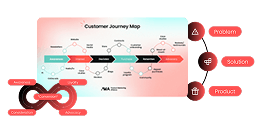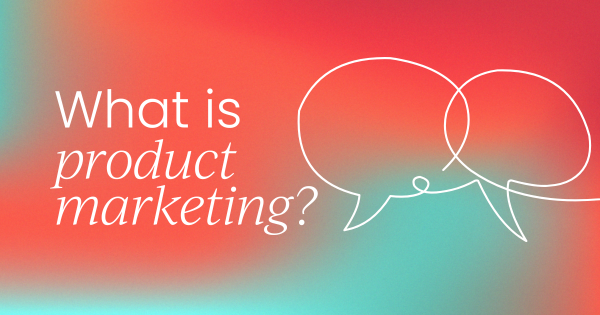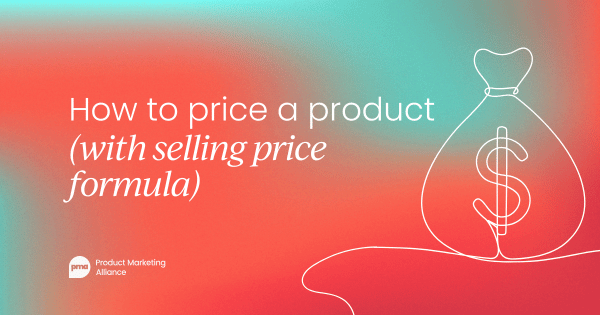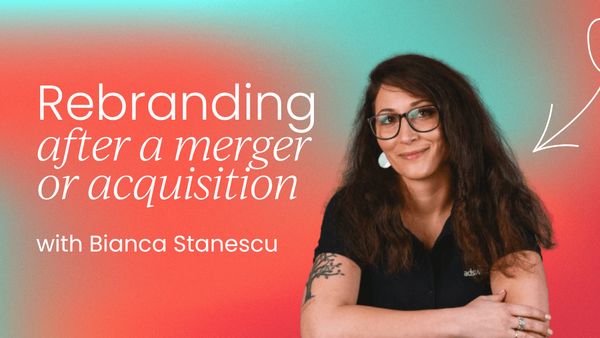Are mergers and acquisitions the corporate version of an arranged marriage? They could be.
Two companies, sometimes wildly different, suddenly find themselves under one roof, negotiating and sorting through assets, debating which traditions to keep, and deciding whether to change their last name.
Done right, rebranding signals a fresh, unified future. Done wrong, it’s a corporate identity crisis that erodes employee and customer trust.
I’ve been through a handful of rebrandings in the last 15 years, and if there’s one thing I’ve learned, it’s that rebranding is never just about new logos or clever taglines. It’s a strategic decision that reshapes positioning, customer relationships, internal alignment, and go-to-market strategies.
It’s rarely a straightforward process, even with the best intentions. So, before rushing to rebrand, let’s take a deep breath and tackle some of the biggest challenges head-on.
Should you rebrand at all?
Some people love brands so much that they tattoo them on their bodies. Others hate them enough to fuel viral rants on Twitter (sorry, X!).
Either way, brands are deeply personal. They are more than just logos. They represent identity, loyalty, and, for some, an emotional investment. I will admit I have felt that pull myself.
Before diving into brainstorming sessions for a new name (and immediately regretting it), take a step back. A full rebrand is not always necessary. In some cases, preserving a strong legacy brand is the smarter move. Here are some key questions to answer:
- Brand equity: Does the acquired brand have strong recognition and customer loyalty that are worth preserving?
- Market positioning: Will a new identity create a competitive advantage or confuse everyone?
- Cultural fit: Are the companies aligned, or is this the corporate equivalent of saying “we need to talk” before a weekend getaway?
- Legal and trademark considerations: Are there name conflicts that require a rebrand? Lawsuits aren't cheap.
Rebranding, whether tied to a merger or not, only works if real change happens underneath. I’ve seen companies approach it as a fresh start, assuming it could improve their reputation.
At the time, we moved forward knowing it could provide short-term relief, but without deeper operational shifts, the same challenges resurfaced, and customer trust eroded. A new brand won’t fix old problems.
Choosing the right brand architecture
Whether you're keeping a house of brands with separate identities (like Procter & Gamble keeping Tide distinct) or consolidating under a unified brand (like Nest becoming part of Google), this is just one of several established frameworks to guide the decision.
Brand architecture is carefully evaluated by creative agencies or brand marketing experts. I've mostly worked with conservative approaches, like endorsed brands, where the acquired brand maintains its identity but is linked to the parent company.
Companies often use frameworks like the Brand Asset Valuator (BAV) to assess brand strength and differentiation and analyze financial and brand metrics to determine whether rebranding is the right approach. It helps decide whether to retain, integrate, or phase out a brand.
One well-known example is Disney’s acquisition of Marvel. Rather than merging the two brands, Disney retained Marvel’s identity while integrating it into its broader ecosystem.
Google followed a similar strategy with YouTube. Despite its market dominance, Google maintained YouTube’s distinct brand, allowing it to operate independently while leveraging Google's infrastructure. Today, YouTube remains a separate but clearly connected part of Google’s ecosystem.
You can’t make everyone happy. Consistency rules.
Good or bad, these decisions always carry certain risks. And while product marketing doesn't make the final call on rebranding, we certainly influence the process (and how well the aftermath is handled).
Rebranding after an M&A often involves managing emotions, expectations, and the awkward reality that not everyone will agree on the outcome.
If the company has a product marketing team (as they should), PMMs will likely be on the front lines, helping to maintain customer trust and smooth the transition.
Depending on the scale of the merger and internal resourcing, this could mean:
- Collaborating with brand marketing and executives to redefine competitive positioning and, in some cases, launch a whole new market category.
- Endless brand consistency work: spending months chasing rogue logos, updating outdated decks, and making sure the new brand guidelines don't mysteriously “disappear” from everyone’s bookmarks.
A messy brand identity is like a battle card referencing a product you discontinued last year. It’s cringe, confusing, and refuses to die.
And according to Lucidpress, 76% of customers say brand consistency influences purchasing decisions.
A disjointed or rushed rebrand can create uncertainty and hesitation in the buying process.
Once a decision is made, customers need to see a unified, coherent brand identity, whether that means keeping a legacy name, merging into a hybrid brand, or going all in on a full rebrand.
I hate inconsistent branding as much as ambrosia and product names that sound like randomly generated passwords.
A brand (like your positioning) is something you want to evolve, but not overnight. Give it some time, love, and budget to actually make an impact.
Timing matters: When to rebrand right away
Rebranding timing can be just as important as the decision itself. Move too fast, and customers feel blindsided. Move too slow, and you look indecisive. Change your mind and create a branding mess even the best PR team can't untangle.
Reports show that 70-80% of mergers and acquisitions fail because value is lost in the first 100 days after the transaction. This data point often creates pressure for immediate rebranding, but speed should be balanced with strategic consideration.
It's like that friend who gets engaged after three weeks of dating. Sometimes, it works out beautifully, while you and I will quietly start a betting pool.
Product marketing may have the data to back up corporate decisions, as it is close to customers. So, when should a rebrand happen immediately?
- A major strategic shift is happening.
- Legal or trademark issues require a change.
- Keeping both brands would create unnecessary complexity (or a logo that requires a magnifying glass).
- The M&A fundamentally transforms the business model.
Timing matters: patience is a virtue
Rebranding isn’t just about when you do it. It’s also about how you do it. Research by Muzellec and Lambkin suggests that a phased approach can often preserve more brand equity than immediate changes. Sometimes, the most brilliant move is simply to wait.
Homburg and Bucerius also found that rushing integrations can destroy value, especially when the merging companies serve different markets or operate under various business models. In branding, timing is strategy.
And as product marketers, we understand timing and value better than anyone. We’ve all witnessed what happens when a big launch date is picked before the product is actually ready.
When should you consider delaying a rebrand?
Here are a few good reasons:
- The acquired company has die-hard customer loyalty (think cult brand status).
- The two businesses serve distinct market segments that don’t mix well.
- Operational integration is already a nightmare, and branding can wait.
- The companies have wildly different cultures, and slapping a new logo on things won’t magically align them.
Sometimes, the best move is to give the brand time to breathe. A successful rebrand isn’t just about speed.
Customer impact: Minimizing disruption
A successful rebrand also involves how a company communicates change, and tone of voice is one of the most overlooked aspects of this process.
If the brand suddenly sounds unfamiliar, customers may feel disconnected or uncertain about what has changed.
Maintaining a consistent tone reassures them that the core values remain the same while branding evolves. The PMA guide on tone of voice provides valuable insights for keeping messaging familiar while adapting to a new identity.
Here are some key actions to ensure a smooth transition:
- Clear messaging: Customers need to understand why the brand is changing and how it affects them. Vague PR statements create confusion. Transparent communication builds trust.
- Consistency: Every touchpoint, including the website, email, social media, customer support, product assets, and your products, should consistently reflect the new brand. Mismatched branding erodes credibility.
- Retention focus: Change creates uncertainty, which can lead to customer churn. Monitoring sentiment, addressing concerns early, and reinforcing value help maintain retention.
A rebrand should feel like an upgrade rather than a disruption. Customers who trust the brand today should feel confident in its future.
Product marketing’s role in rebranding: reality check
What is product marketing’s role in rebranding after an M&A? Like most things in product marketing, the answer depends on the situation.
In an ideal world, product marketing should be heavily involved in rebranding but not responsible for carrying it alone. Rebranding without the right resources is a fast track to confusion, internally and externally.
If the timing isn’t right, the why isn’t clear, or there’s no plan for customer adoption, even the best-designed brand refresh will fall flat.
In an ideal world, PMMs are embedded in the strategy before the rebrand is even a conversation. We shape the narrative, gather customer insights, and define positioning that makes sense in the new landscape.
When the rollout happens, we help execute, ensuring messaging stays clear and consistent. Once the dust settles, we reinforce the brand’s new identity, measure impact, and refine based on real-world feedback.
But let’s be real. If you're a solo product marketer unwillingly wearing a brand marketing hat, you’ll likely be driving both positioning and execution.
In a more mature team, PMMs play a strategic role to bring the brand to life.
Where product marketing adds the most value
No matter how scaled-up (or lean) your team is, PMMs should be deeply involved in these key areas:
- Messaging and positioning – Ensuring the new brand narrative resonates with customers and stakeholders. A rebrand is more than a visual change; it’s a shift in perception.
- Customer communication – Managing announcements and rolling out the change in a way that doesn’t confuse or alienate your audience. A poorly communicated rebrand creates uncertainty and leads to churn.
- Sales and GTM enablement – Equipping teams with the right messaging, pitch decks, FAQs, and materials to ensure a smooth transition. If sales teams aren’t aligned, the new brand can feel disconnected from the reality of what’s being sold.
- Competitive and market analysis – Benchmarking against competitors to ensure the new brand doesn’t lose ground. If you change your brand identity without considering market perception, you risk creating gaps for competitors to fill.
Take-aways
A successful rebrand after an M&A goes beyond visuals. It integrates company cultures, aligns messaging, and ensures stakeholders stay engaged.
Product marketing plays a key role in making that happen, but even the best PMMs can’t fix poor timing, lack of strategy, or leadership misalignment.
Sometimes, the best move is a full rebrand. Other times, it’s smarter to evolve what’s already working. Because the smartest strategy isn’t always a dramatic reinvention on Twitter (sorry, X!).
Disclaimer: The insights shared in this article are based on my experience navigating product marketing, rebrands, and M&As across various roles.
I’ve had the opportunity to work with incredible teams who approach these challenges thoughtfully, and this piece reflects broader industry best practices rather than specific strategies or decisions from any current or past employer.


















 Follow us on LinkedIn
Follow us on LinkedIn




.svg)
Start the conversation
Become a member of Product Marketing Alliance to start commenting.
Sign up now